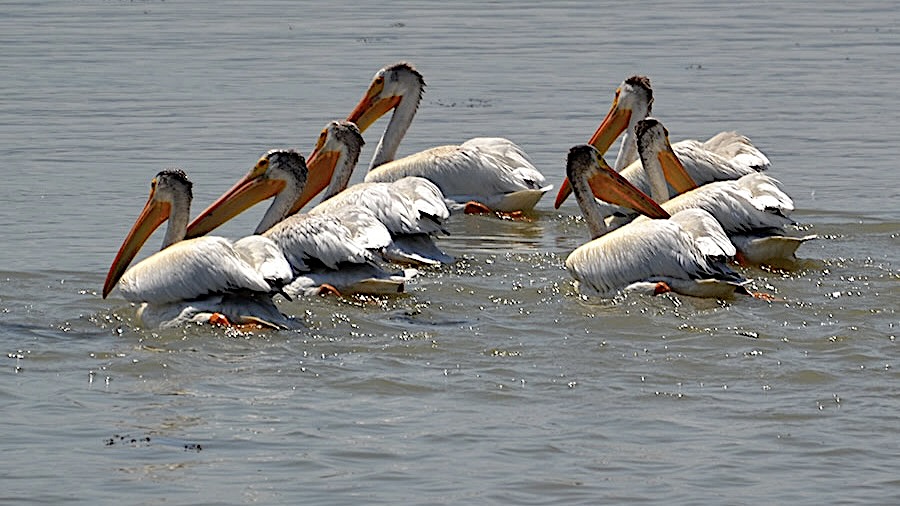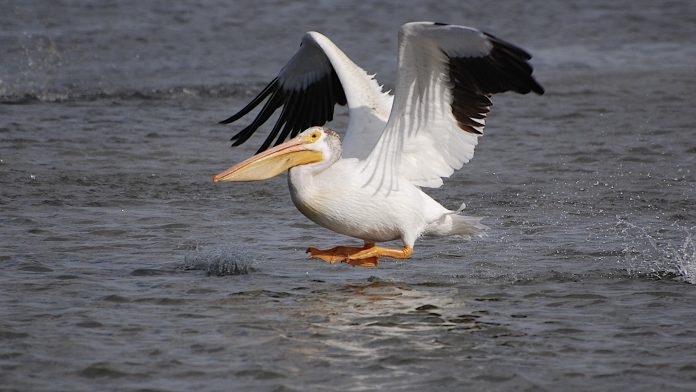SALT LAKE CITY, Utah May 10, 2024 (Gephardt Daily) — The pelicans are returning to Gunnison Island in the Great Salt Lake to nest as lake waters rise to cut off coyote threats.
Wildlife officials have counted some 800 of the returnees currently at Gunnison. The number is still way down from historic averages of up to 8,500 of the big birds on the island tending more than 4,200 nests, they report.
“After American white pelicans completely abandoned their nesting colony on Gunnison Island last year, we were excited to see the birds returning to nest there this spring, as well as at nearby Hat Island,” the state Division of Wildlife Resources said in a Monday press release on social media.
Due to low water levels, neither island has actually been an “island” for many years, the DWR said, and predators like coyotes have gained access to the islands via land bridges.
Because pelicans are extremely susceptible to disturbances while nesting, they stopped nesting at Hat Island — with the last confirmed reports of nesting there in 1943 — and biologists believe they abandoned the Gunnison Island nesting colony last year due to repeated disturbances from predators.

“Because monitoring surveys of white pelicans are still ongoing and these birds are continuing to arrive at the nesting colonies, we don’t have a final count of how many pelicans are nesting on each island yet.
“However, initial estimates are around 800 birds on Gunnison Island and around 1,300 on Hat Island. Learn more about nesting pelicans and how we monitor their populations: bit.ly/4boGTry.”
The DWR owns and manages both Gunnison and Hat islands as wildlife management areas, primarily serving as protected bird rookeries. The islands are closed to visitors and it is illegal for people to go within one mile of the islands by land, air or water.
Pelicans are very large birds, the DWR noted, so their nesting period takes a long time:
- A week to court, build a nest and lay eggs
- A month to incubate the eggs
- Three weeks to feed a nestling
- Nine to 10 weeks to care for a pre-fledgling





